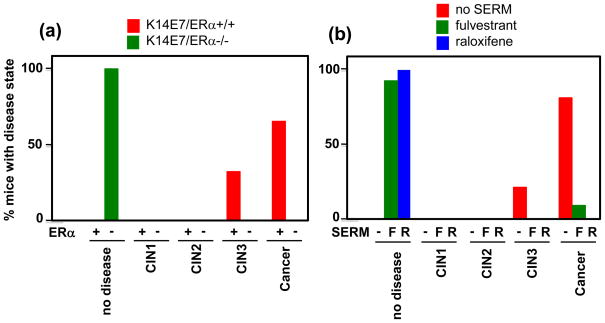Figure 2.
Requirement of ERα for genesis and persistence of cervical cancer. (a) Influence of ERα status on cervical disease in HPV transgenic mice. Shown is the worst disease state in the cervices of K14E7/ERα+/+ (red; +) or K14E7/ERα−/− (green; −) mice treated for 6 months with 17β-estradiol. Note the complete absence of disease in mice deficient for ERα as compared to the presence of high-grade dysplasia, CIN3 (33%), or cervical cancer (66%) in ERα-sufficient mice. Data taken from [21]. (b) Effectiveness of SERMs in treating cervical neoplasia in HPV transgenic mice. Shown is the worst disease state in the cervices of K14E6E7 mice treated with 17β-estradiol for 6 months to induce cervical cancer, then either left untreated (red; −) or treated with fulvestrant (green; F) or raloxifene (blue; R) for 1 month. Note the complete (100%) or near complete (92%) loss of disease in mice treated with raloxifene or flulvestrant, respectively, compared to the retention of CIN3 (21%) or cervical cancer (79%) in those mice not treated with a SERM. Data taken from [22].

